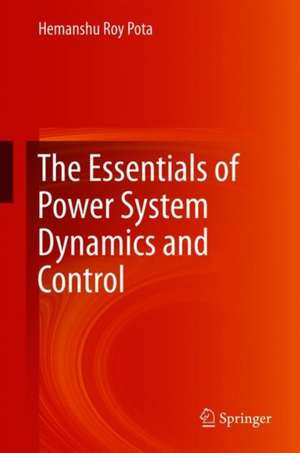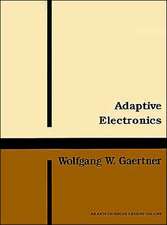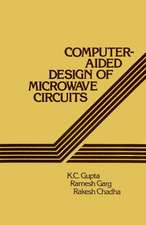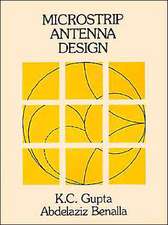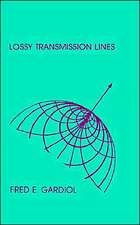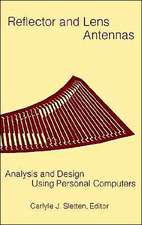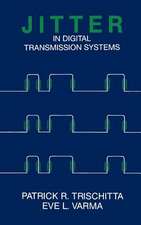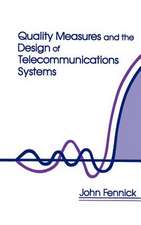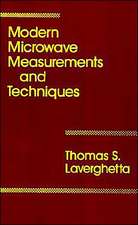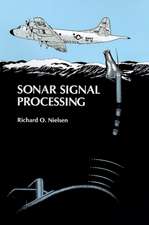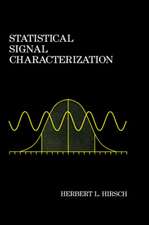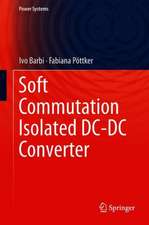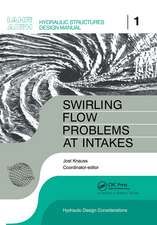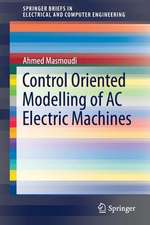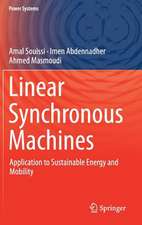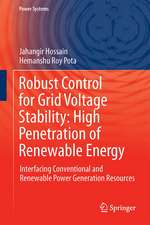The Essentials of Power System Dynamics and Control
Autor Hemanshu Roy Potaen Limba Engleză Hardback – 28 mai 2018
In most textbooks modelling, dynamic analysis, and control are closely linked to the computation methods used for analysis and design. In contrast, this book separates the essential principles and the computational methods used for power system dynamics and control. The clear distinction between principles and methods makes the potentially daunting task of designing controllers for power systems much easier to approach.
A rich set of exercises is also included, and represents an integral part of the book. Students can immediately apply—using any computational tool or software—the essential principles discussed here to practical problems, helping them master the essentials.
| Toate formatele și edițiile | Preț | Express |
|---|---|---|
| Paperback (1) | 420.90 lei 38-44 zile | |
| Springer Nature Singapore – 7 feb 2019 | 420.90 lei 38-44 zile | |
| Hardback (1) | 492.88 lei 3-5 săpt. | +26.33 lei 7-11 zile |
| Springer Nature Singapore – 28 mai 2018 | 492.88 lei 3-5 săpt. | +26.33 lei 7-11 zile |
Preț: 492.88 lei
Preț vechi: 593.84 lei
-17% Nou
Puncte Express: 739
Preț estimativ în valută:
94.32€ • 102.42$ • 79.23£
94.32€ • 102.42$ • 79.23£
Carte disponibilă
Livrare economică 01-15 aprilie
Livrare express 18-22 martie pentru 36.32 lei
Preluare comenzi: 021 569.72.76
Specificații
ISBN-13: 9789811089138
ISBN-10: 9811089132
Pagini: 162
Ilustrații: XIV, 222 p.
Dimensiuni: 155 x 235 x 19 mm
Greutate: 0.6 kg
Ediția:1st ed. 2018
Editura: Springer Nature Singapore
Colecția Springer
Locul publicării:Singapore, Singapore
ISBN-10: 9811089132
Pagini: 162
Ilustrații: XIV, 222 p.
Dimensiuni: 155 x 235 x 19 mm
Greutate: 0.6 kg
Ediția:1st ed. 2018
Editura: Springer Nature Singapore
Colecția Springer
Locul publicării:Singapore, Singapore
Cuprins
1 Introduction.- 2 Synchronous Machines.- 3 Induction Machines.- 4 Network Equations Power Systems.- 5 Simulations.- 6 Linear Control: Analysis.- 7 AVR Tuning.- 8 Power System Stabilisers.
Notă biografică
Dr Hemanshu Pota is a Associate Professor at the University of New South Wales. His research interests are in the areas of modelling and control of flexible structures and acoustical noise, as well as cable-driven long-reach manipulators. He has worked on obtaining models for distributed parameter systems using symbolic algebra software, and on various control techniques for distributed parameter systems, including: H-infinity, spatial control, resonant control, passivity-based controller design and minimax linear quadratic Gaussian (LQG) control.
Textul de pe ultima copertă
This book presents a general framework for modelling power system devices to develop complete electromechanical models for synchronous machines, induction machines, and power electronic devices. It also presents linear system analysis tools that are specific to power systems and which are not generally taught in undergraduate linear system courses. Lastly, the book covers the application of the models, analysis and tools to the design of automatic voltage controllers and power system stabilisers, both for single-machine-infinite-bus systems and multi-machine interconnected systems.
In most textbooks modelling, dynamic analysis, and control are closely linked to the computation methods used for analysis and design. In contrast, this book separates the essential principles and the computational methods used for power system dynamics and control. The clear distinction between principles and methods makes the potentially daunting task of designing controllers for power systems much easier to approach.
A rich set of exercises is also included, and represents an integral part of the book. Students can immediately apply—using any computational tool or software—the essential principles discussed here to practical problems, helping them master the essentials.
In most textbooks modelling, dynamic analysis, and control are closely linked to the computation methods used for analysis and design. In contrast, this book separates the essential principles and the computational methods used for power system dynamics and control. The clear distinction between principles and methods makes the potentially daunting task of designing controllers for power systems much easier to approach.
A rich set of exercises is also included, and represents an integral part of the book. Students can immediately apply—using any computational tool or software—the essential principles discussed here to practical problems, helping them master the essentials.
Caracteristici
Highlights in a simplified manner the essential principles and the computational methods, by separating the two Includes a wealth of illustrations with student-friendly text Includes exercises and MATLAB codes Written by a leading expert in the area of Power Systems
